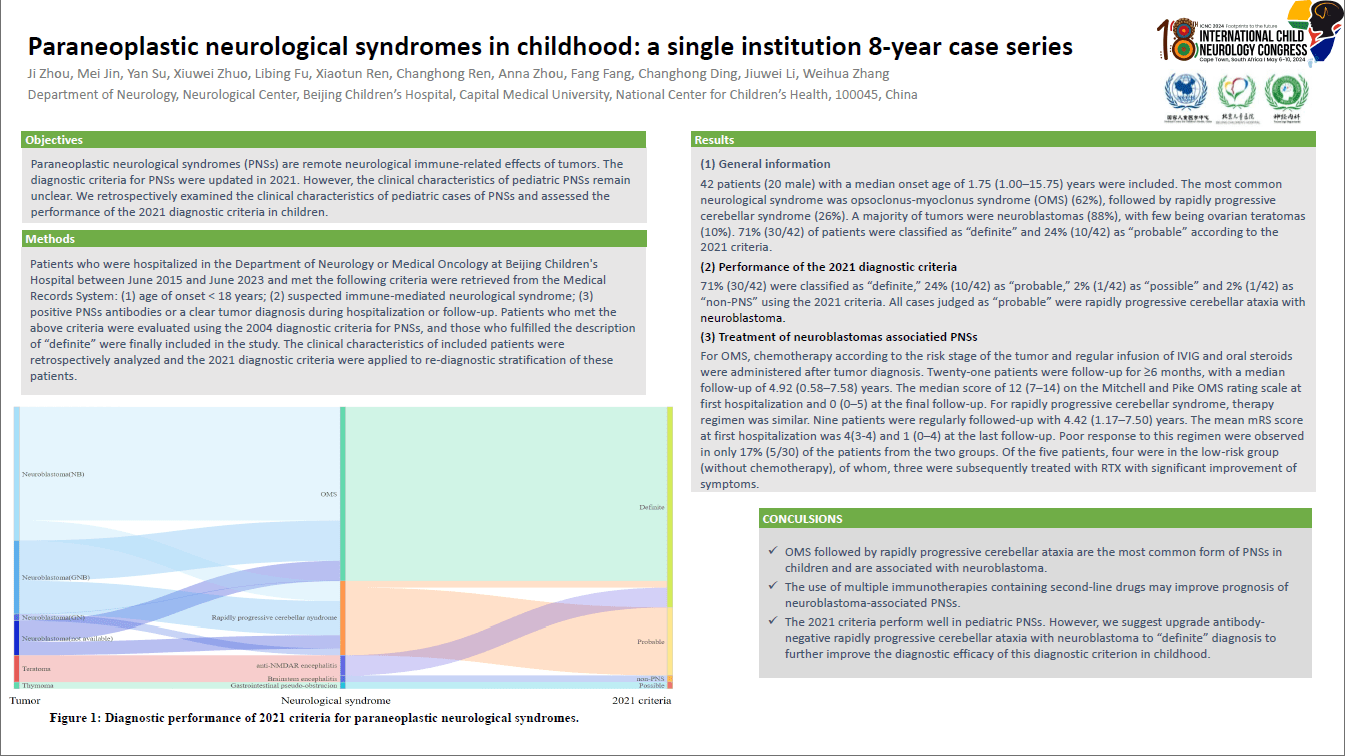Paraneoplastic Neurological Syndromes In Childhood: A Single Institution 8-year Case Series
Objective: The cases of pediatric PNS were retrospectively summarized to further understand the clinical characteristics of pediatric PNSs. Methods: Patients hospitalized in Beijing Children's Hospital from June 2015 to June 2023 were included and required to meet the following criteria: (1) considering immune-mediated neurological syndrome; (2) positive PNSs antibodies or a clear diagnosis of tumors; (3) "confirmed" diagnosis using 2004 or 2021 diagnostic criteria. The clinical characteristics of patients were retrospectively analyzed. Results: Forty-two patients were included. The most common neurological syndrome was OMS (61.90%) followed by rapidly progressive cerebellar syndrome (26.19%). The combined tumors were relatively homogeneous, with the majority being neuroblastoma (88.10%) . The percentage of antibody positivity was low (11.90%). With a median follow-up of 4.50 (0.50-7.58) years, only 5.71% (2/35) recurred. The median mRS score at final follow-up was 1 (0-5). 42 patients were diagnosed as “definite” using 2004 diagnostic criteria, but only 30 (71.43%) were definitively diagnosed using 2021 criteria. For neuroblastoma combined with PNSs, we gave the corresponding chemotherapy, regular IVIG and oral steroid and only 16.67% (5/30) responded poorly. Conclusions: Neuroblastoma combined with OMS is the most common form of PNSs in children. The low rate of antibody positivity in children with PNSs may lead to underdiagnosis using 2021 diagnostic criteria.
Ji Zhou
Beijing children's hospital
China
Xiuwei Zhuo
Beijing children's hospital
China
Jiuwei Li
Beijing children's hospital
China
Xiaotun Ren
Beijing children's hospital
China
Fang Fang
Beijing children's hospital
China
Weihua Zhang
Beijing children's hospital
China
